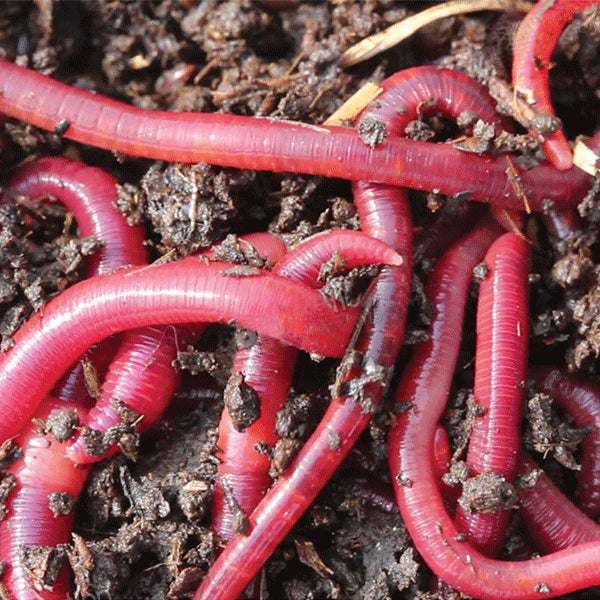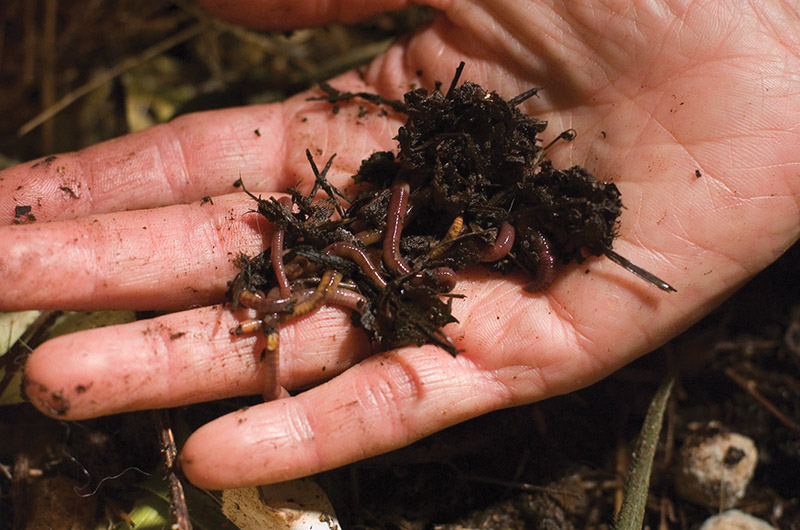Red worms: How they improve soil
Red worms: How they improve soil
Blog Article
Boost Dirt Wellness Normally With Red Wigglers
The combination of red wigglers into soil management methods provides an engaging approach for enhancing dirt health and wellness naturally. These earthworms not just change organic waste right into important vermicompost, but their all-natural actions likewise advertise enhanced dirt framework, aeration, and nutrient schedule. Comprehending the details of setting up and preserving an effective vermicomposting system is vital to fully leverage their advantages. Discovering the crucial actions and prospective difficulties involved can significantly impact the efficiency of this sustainable strategy. What vital aspects should be taken into consideration to make best use of the benefits of these remarkable decomposers?
Benefits of Red Wigglers

Additionally, red wigglers enhance soil framework by creating channels as they tunnel with the planet. This activity boosts aeration and water drainage, promoting root development and ensuring that plants receive sufficient oxygen and moisture. In addition, the spreadings generated by red wigglers are high in nutrients such as nitrogen, phosphorus, and potassium, which are vital for plant development.
Red wigglers also help in the decrease of harmful virus and bugs by outcompeting them for resources, better adding to a healthier dirt setting. Their visibility can lead to a decline in the need for artificial fertilizers and pesticides, promoting sustainable agricultural methods. Generally, incorporating red wigglers right into dirt monitoring approaches supplies a natural and efficient ways of boosting soil vigor, thus sustaining robust plant growth and agricultural performance.
Establishing Up Vermicomposting
Establishing a vermicomposting system is a useful method to harness the amazing advantages of red wigglers in enhancing dirt health and wellness. red wigglers. To begin, select a suitable container-- ideally, a plastic or wood bin with a cover to maintain moisture and temperature level. The container must have water drainage openings to avoid excess water build-up
Next, prepare bedding product, which functions as a habitat for the worms. Appropriate products consist of shredded paper, cardboard, or coconut coir. Aim for a depth of 4-6 inches to give sufficient area for the worms.
When the bed linen is in place, present the red wigglers, normally at a proportion of one pound of worms for every single square foot of area in see this here the bin. Following this, add kitchen area scraps such as fruit and vegetable peels, coffee premises, and smashed eggshells. Avoid meat, dairy products, and oily foods, as these can draw in bugs.
(Lenoir Worm Farms)
Caring for Your Worms
Preserving the wellness of your red wigglers is vital for a growing vermicomposting system. Correct care makes certain that these valuable organisms can successfully break down natural issue and enrich your dirt. Begin by giving an appropriate habitat; a well-ventilated bin with a wet, dark atmosphere is crucial. Aim for a bed linen material that includes shredded paper, cardboard, or coconut coir, which ought to be kept moist but not filled.
Feeding your worms is another essential facet of their care. Red wigglers flourish on cooking area scraps such as fruit and veggie peels, coffee grounds, and crushed eggshells.
Temperature level monitoring is important; worms choose an array of 55 to 77 levels Fahrenheit. By complying with these guidelines, you will promote a healthy ecological community for your red wigglers.
Making Use Of Worm Spreadings in Dirt
Worm castings, typically described as "black gold," are an effective change that can significantly improve soil wellness and fertility. red wigglers. These nutrient-rich, organic fertilizers are created by red wigglers during their digestion procedure, leading to a carefully textured product that is advantageous for plants and dirt alike
Incorporating worm spreadings into your dirt enhances its structure, boosting oygenation and water retention. This is particularly helpful for sandy soils that drain also rapidly, as well as hefty clay dirts that can come to be compacted. Worm castings are brimming with vital nutrients, consisting of nitrogen, phosphorus, and potassium, which are important for plant growth.

Inevitably, using worm castings promotes a growing community within the dirt, causing healthier plants and more sustainable horticulture methods.
Tips for Effective Composting
Successful composting needs careful attention to a few essential principles that can significantly enhance the high quality of the last product. First, balance is vital; maintain an appropriate ratio of green materials (nitrogen-rich) to brownish materials (carbon-rich), preferably around 1:3. This balance assists in reliable disintegration and decreases odors.
Second, aeration plays a crucial function. Regularly transforming the compost heap boosts oxygen flow, which accelerates microbial activity and rates up the composting procedure. Go for a heap dimension of at least 3 feet by three feet to preserve heat, which further promotes decay.
(red worms)
Moisture material is another crucial factor; the garden compost needs to perspire however not soggy. An excellent guideline is to attain a wetness level comparable to that of a wrung-out sponge. Also much water can bring about anaerobic problems, while too little can slow down decomposition.
Finally, monitor the temperature of the compost. A temperature series of 130 ° F to 160 ° F shows active composting and helps eliminate pathogens and weed seeds. By sticking to these concepts, you will produce a nutrient-rich compost that sustains dirt health and improves plant growth.
Conclusion
Integrating red wigglers right into gardening practices enhances dirt wellness through natural procedures. These worms add to the malfunction of natural products, resulting in nutrient-rich vermicompost that improves soil structure and fertility.
Report this page